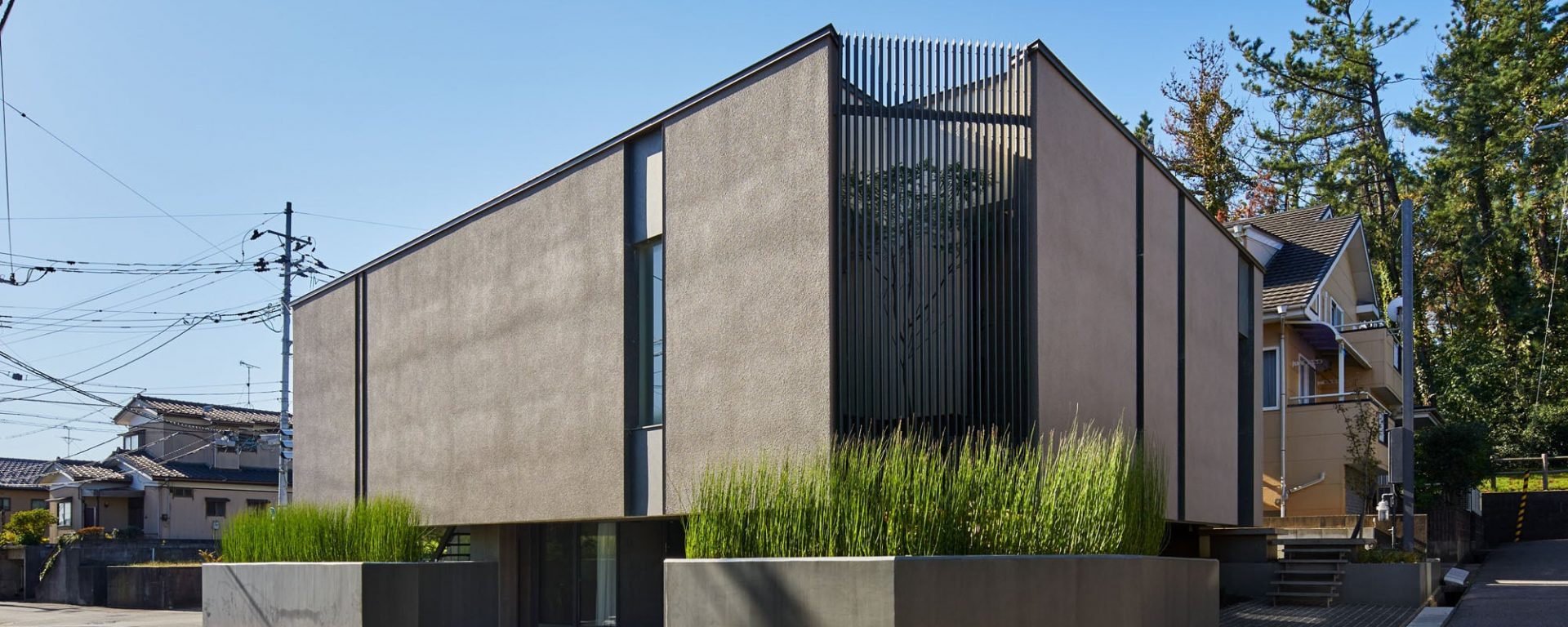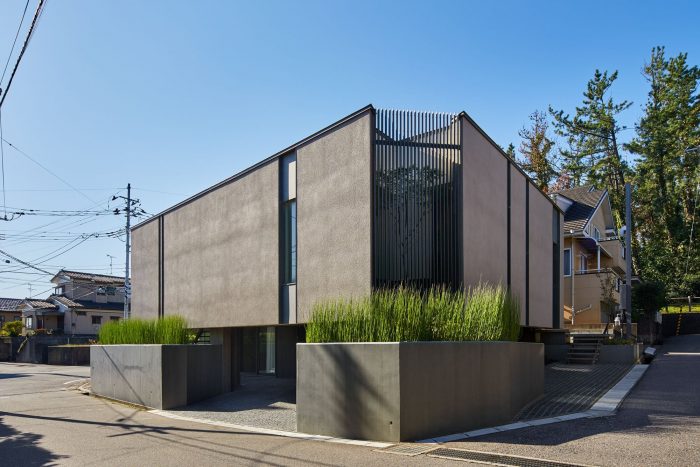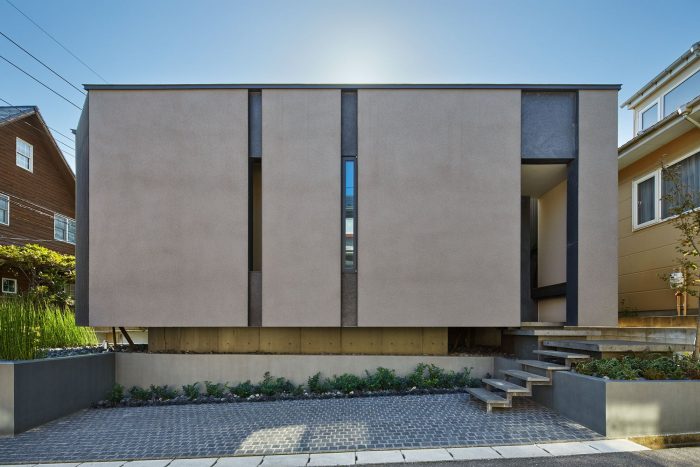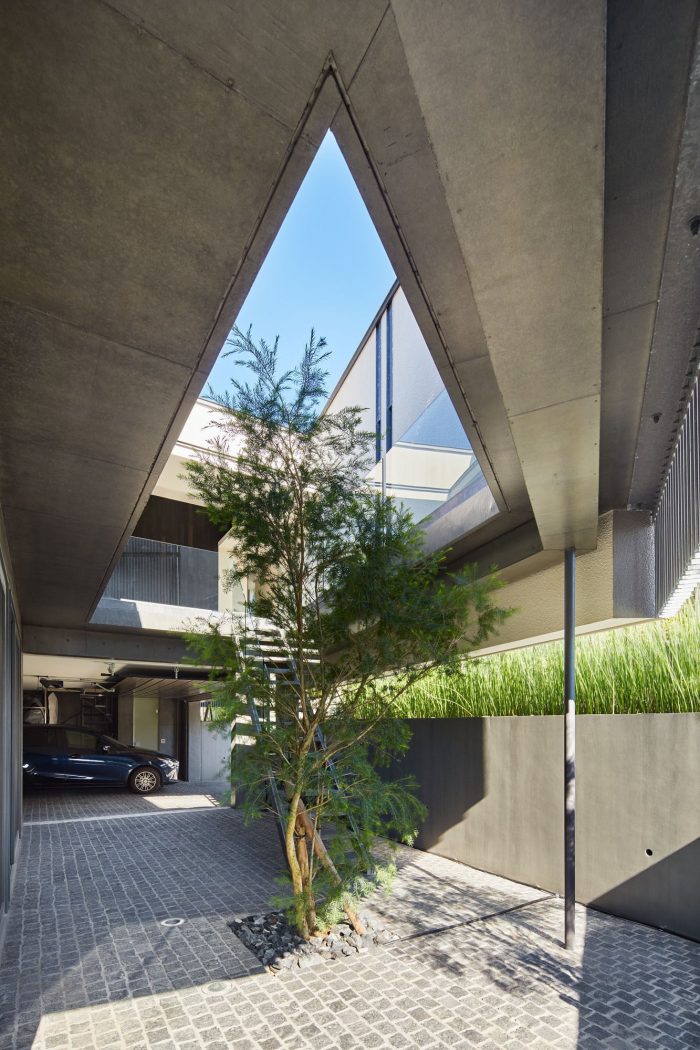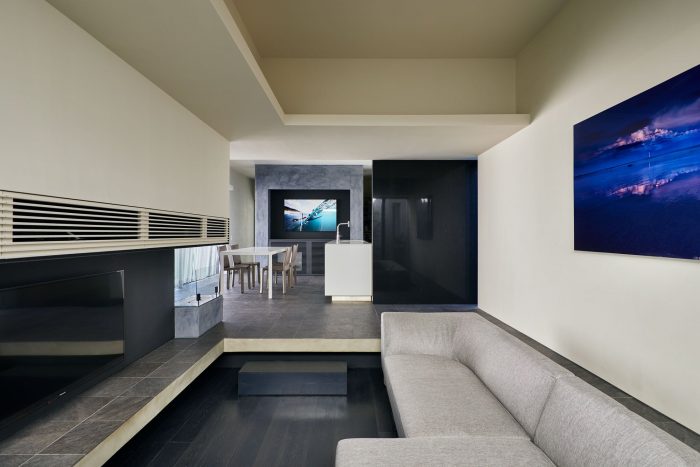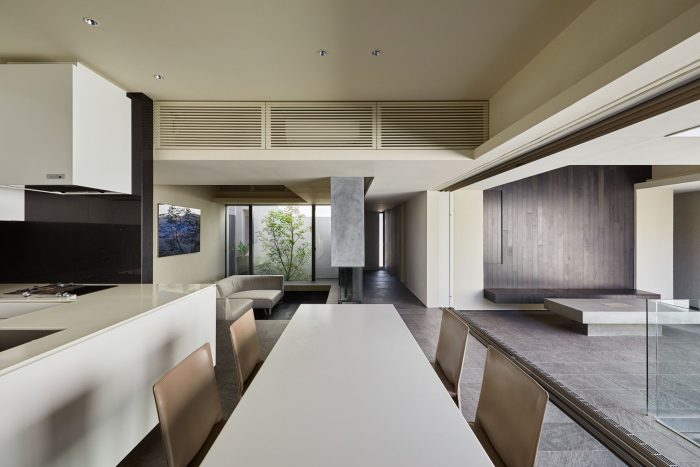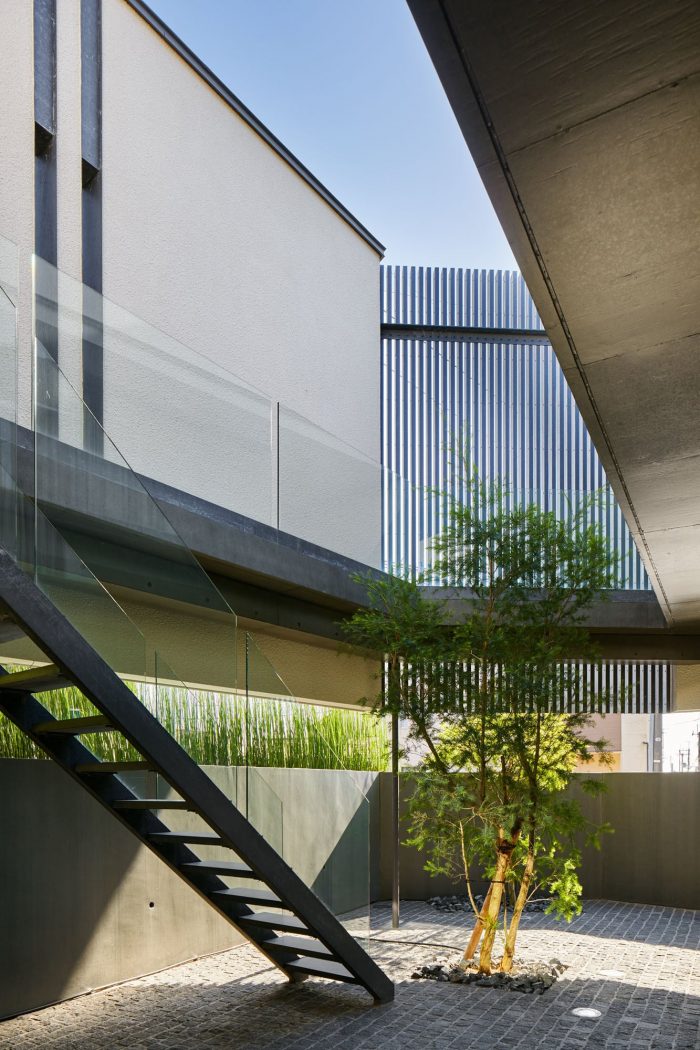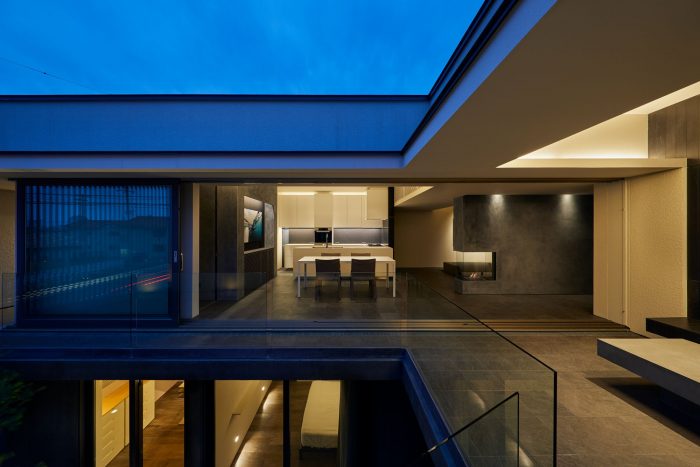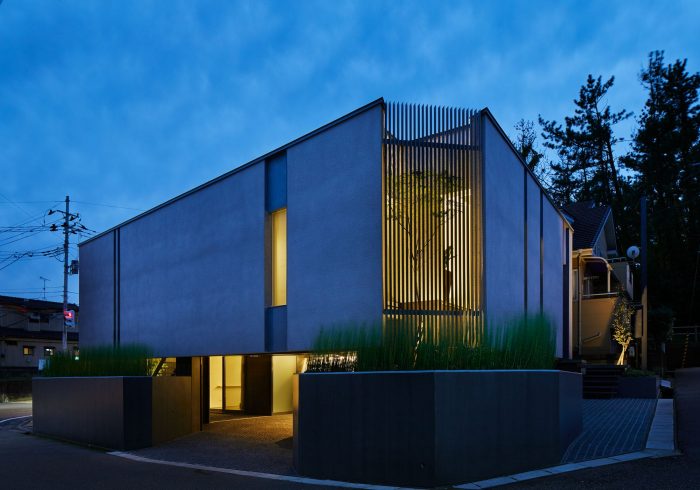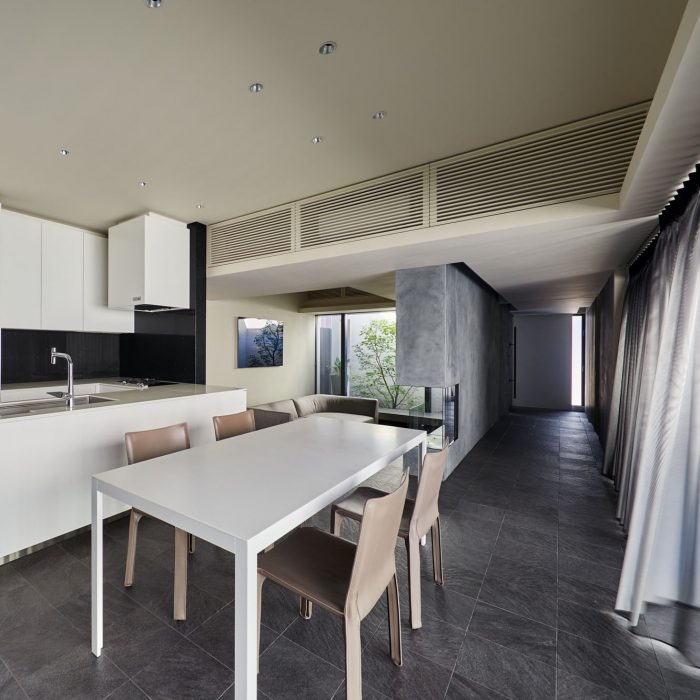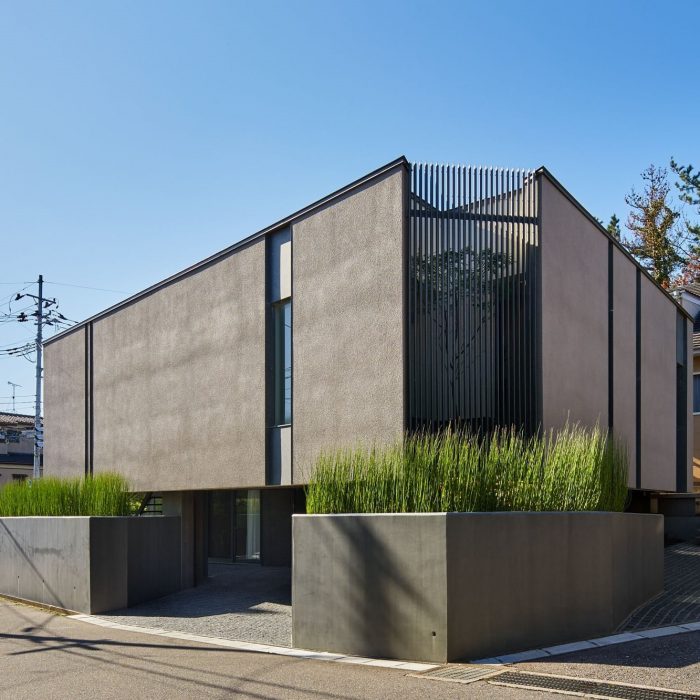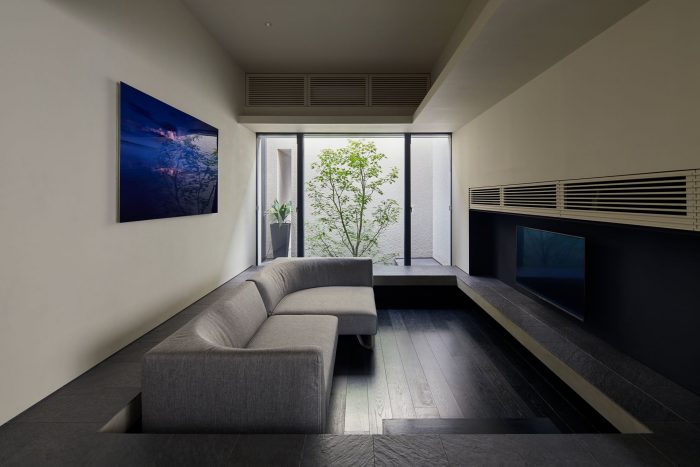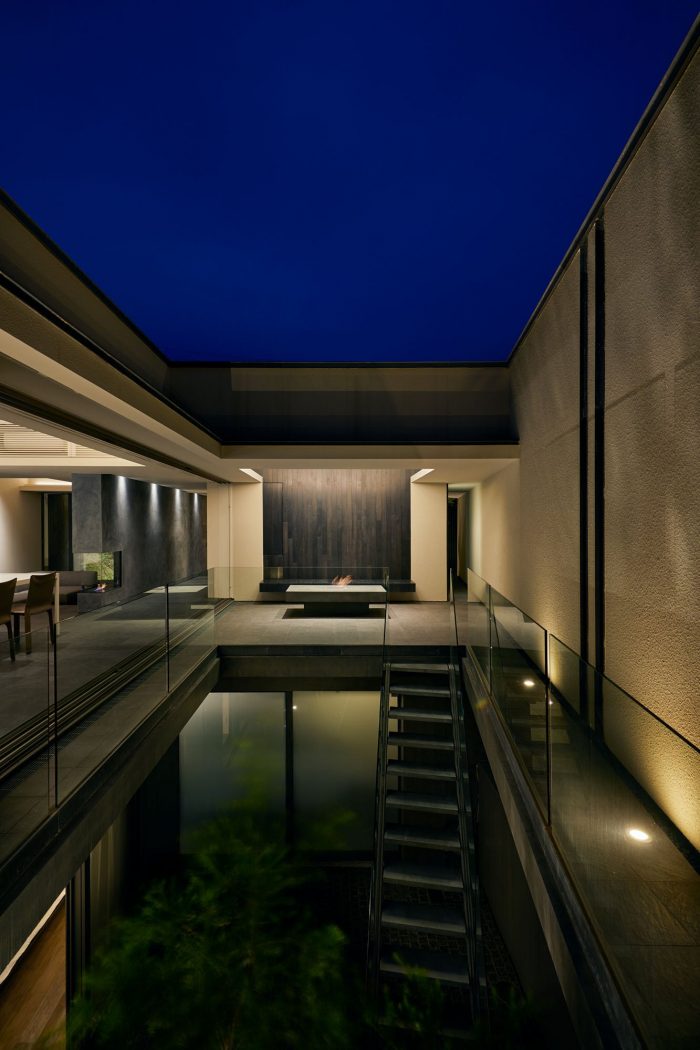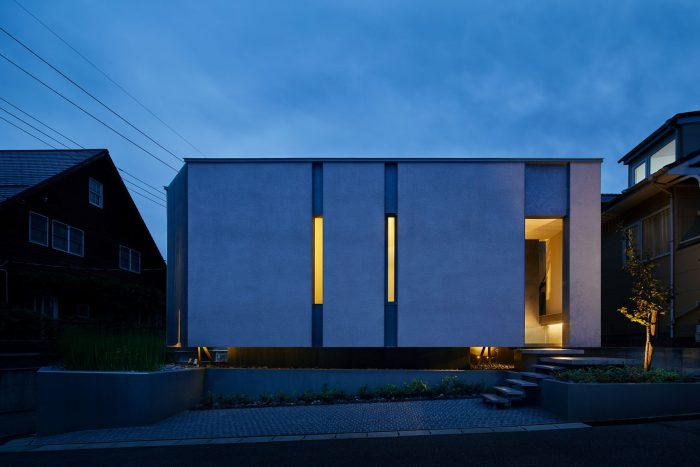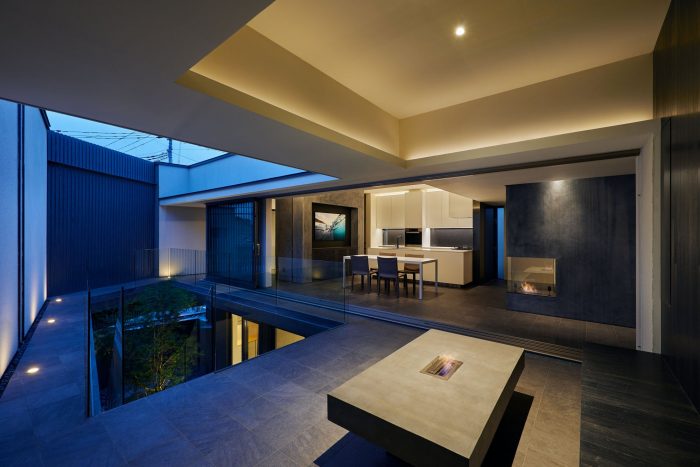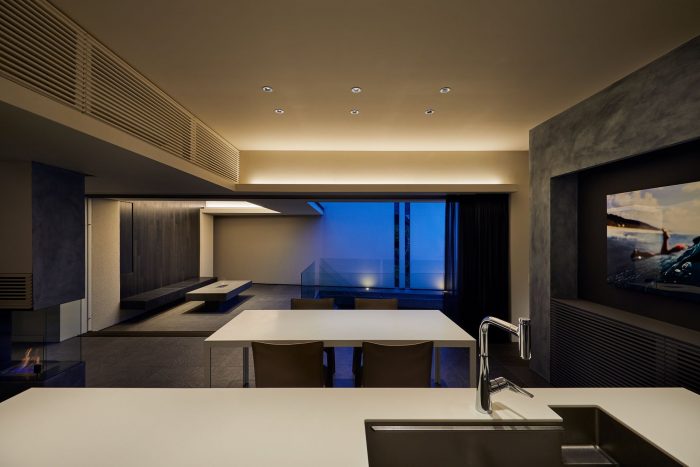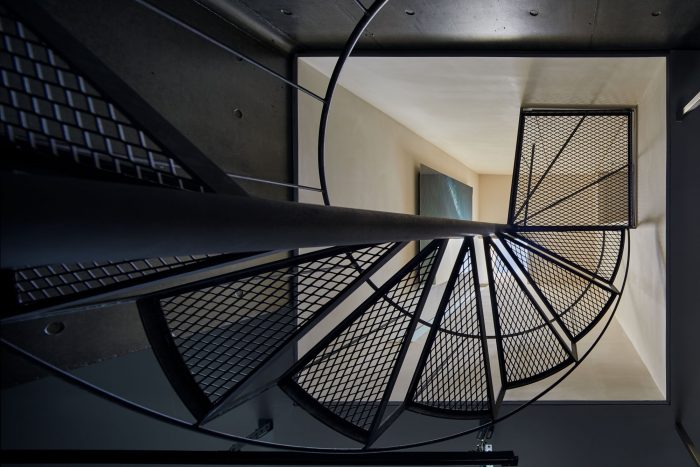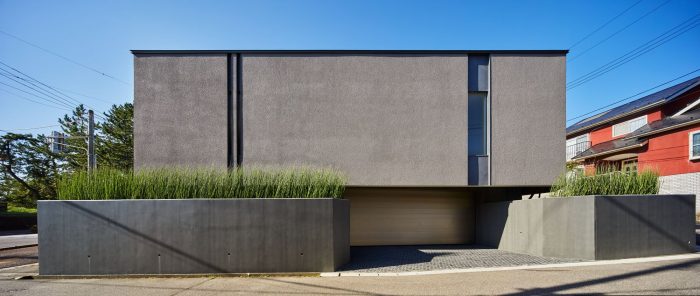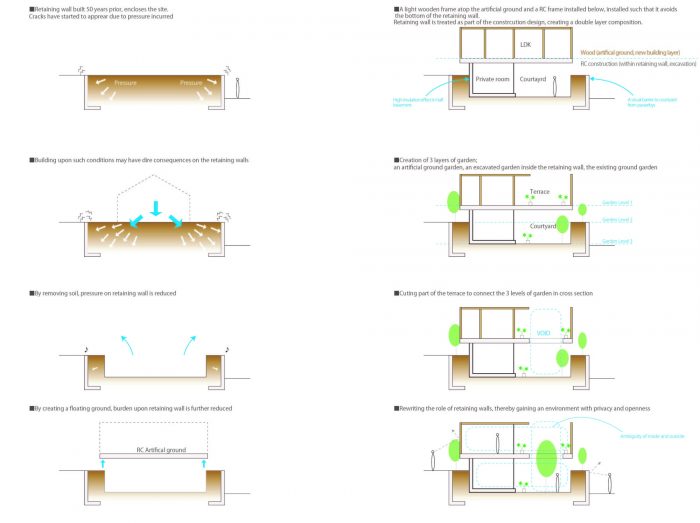该地块所在的住宅区紧邻日本新泻县西区的一条高速高速公路。该地区在50多年前用混凝土挡土墙做了堤岸,随着时间的推移,这些墙已经被削弱。我们缓解这些墙体所带来的压力的设计方法是减少场地内的土壤,并将空间转换成一个庭院。我们选择在这些墙内为未来的一代创造一个风景优美的空间,他们将在未来50年内继承这个场地。
The residential area where the site is located abuts a high-speed motorway in the Nishi ward of Niigata, Japan. The area was embanked with concrete retaining walls over 50 years ago and with age, these walls have weakened. Our design approach to alleviating the stresses incurred by these walls was to reduce the soil inside the site and convert the space into a courtyard. We chose to create a scenic space within these walls for the generation to come, who will inherit this site for the next 50 years.
通过清除土壤和释放空间来创建一个新的地下室,一个新的好处显现出来。挡土墙的高度不仅减少了来自高速高速公路的噪音,而且还阻挡了来自大海的强劲西北风和强烈的西晒,同时也作为一个屏障,为生活在日常生活中的居民提供了更大的隐私,使他们远离外面的公共高速公路。
By removing the soil and freeing up the space to create a new basement, a new benefit revealed itself. The height of the retaining walls not only reduced the noise coming from the high-speed motorway, but it also blocked the strong northwest wind coming from the sea and the strong westward sun, as well as acting as a barrier for greater privacy for the indwellers living their everyday life, from the public motorway outside.
但是,木质2F体量并没有完全与街道拉开距离,而是以60厘米的高度停留在混凝土1F之上。这个缝隙将两个环境连接起来,将里面发生的事情过滤给居民。孩子们在街上玩耍的声音渗透到室内,在感官层面上连接室内,产生了一个模糊的室内空间;不完全是室内或室外。
But instead of completely pulling away from the street, the wooden 2F volume rests above the concrete 1F at a height of 60cm. This gap connects the two environments, filtering the happenings of the neighborhood inside to the residents. The sounds of children playing in the street permeate inside, connecting the interior on a sensory level, generating an ambiguous interior space; not quite inside or outside.
地下室一样的院子被私人房间和厚厚的挡土墙包围着,2F的木制生活空间漂浮在上面。生活的基本要素是享受和参与我们的游戏感。这些体量的构成和相互之间以及与周围环境的联系,给了我们这种能力。这个项目通过改写挡土墙的作用,说明了土木工程和以人为本的建筑之间的关系可以实现什么。
The basement like courtyard is surrounded by private rooms and thick retaining walls, and the 2F wooden living space floats above it. The fundamentals of life are to enjoy and engage our sense of play. The composition and connection of these volumes with each other and their surroundings, give us this ability. This project illustrates what the relationship between civil engineering and human-centered architecture can achieve by rewriting the role of a retaining wall.
Architects: Takeru Shoji Architects
Area : 195 m²
Year : 2017
Photographs :Koji Fujii | Nacasa & Partners
Lighting Design : Forlights
Structural Design : Tetsuya Tanaka Structural Engineers
City : Niigata
Country : Japan

